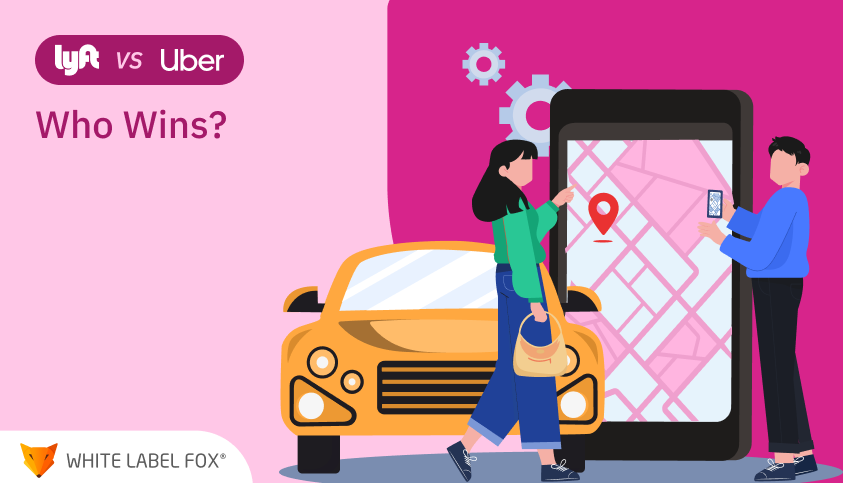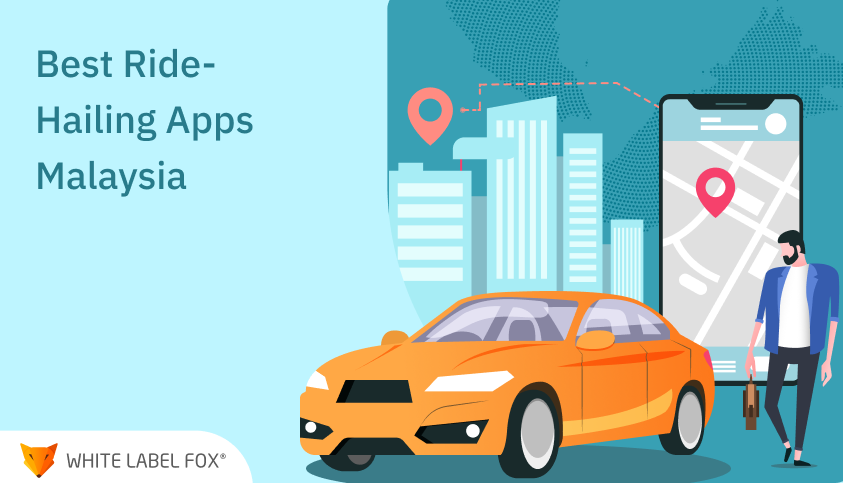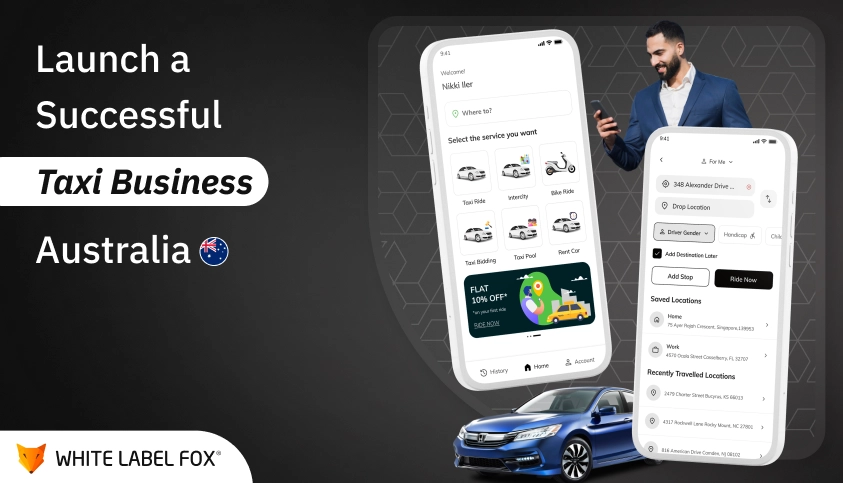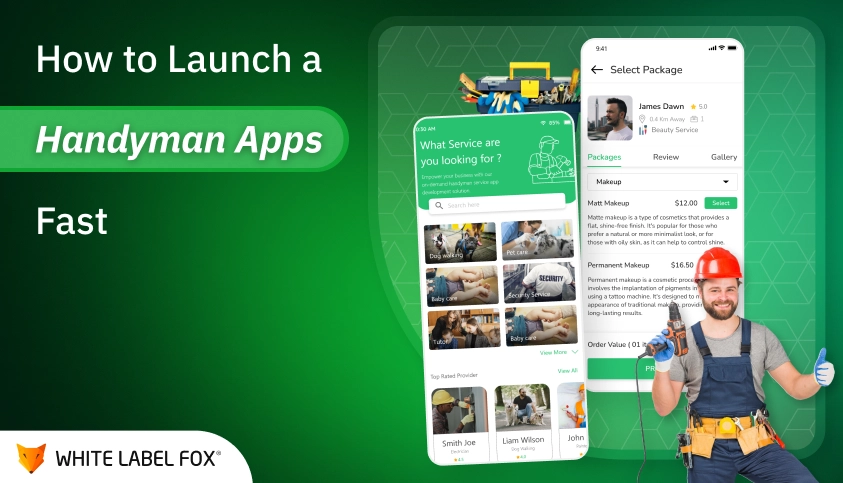Lyft and Uber prove to be the giants of the world of ride-hailing service. Both of these offer on-demand transportation, which is just a touch of a button away, and many things seem to be similar between these. However, there are some unseen differences when we compare features, prices, services, and customer reviews.
We have done our deep analysis on both of these ride-hailing apps, and we take it as our duty to guide you to the decision regarding which app is better.
We have contrasted these two services on seven grounds to give you a crystal clear idea.
A Brief Overview of Lyft and Uber
Before we compare the main features of these platforms, let’s first know how they operate. Discover the ultimate guide on Lyft vs Uber: A detailed comparison of features, prices, and services. Uncover the best options with an Uber clone for your ridesharing needs.
What is Lyft?
Lyft is one of the US and Canada’s ride-sharing firms founded in 2012. The company navigates through hundreds of cities. The services it offers include the ride-sharing option, standard rides, and luxury rides. It claims to be a welcoming and embracing community for drivers and riders alike.
What is Uber?
Uber is a ride-sharing technology company operating since 2009, and it’s a big name today. It offers its services in many countries and is being praised for its user-friendliness.
Now, it’s time to begin the real battle of Lyft vs Uber! Let’s compare these applications on 7 different grounds, including features of Lyft and Uber, price, services, etc.

Round 1: Key Features of Lyft and Uber
Both Lyft and Uber have user-friendly apps for iOS and Android devices. However, each app differs and has something distinct for its own user.
Lyft App Features:
- Clean user interface that can be conveniently navigated.
- Personal power zones for the drivers so that they earn their additional bonuses in hot spots.
- Ease integration of public transport for a few cities.
Uber App Features:
- Safety features like sharing your trip with friends and family while inside the app.
- Uber Rewards is a loyalty scheme. In this scheme, riders will earn points for every ride they will complete.
- The scheduled rides is a highly helpful feature. It allows the user to book rides up to 30 days in advance.
Round 2: Uber vs Lyft Comparison in Pricing
The main debate between Lyft and Uber is the price. Discover the key differences between the Uber business model and Lyft – from pricing to services. Make an informed choice for your next ride-sharing experience! Companies run under a dynamic pricing model, and at any given time, it can change based on some factors, including time of day, demand, and distance.
Base Fares and Pricing Models
Lyft Pricing:
- Lyft’s cost will be a tad cheaper than that of Uber in most cities.
- Lyft offers fixed-rate rides along some specific routes, which greatly reduces price surges.
Uber Pricing:
- Uber has a more flexible pricing model, which means it will increase with the demand and traffic at that hour.
- The surge pricing of Uber has, at times, brought much higher charges than normal fares when it is during peak hours or in high-demand areas.
Ride Types and Costs
Both Uber and Lyft have multiple types of rides, which will take care of all the needs and budgets of riders.
Lyft Ride Types:
- Here, you enjoy ride types like Economy, Premium, and Extra seats, along with a few other types. For economy travelers, the choices include Standard, Wait & Save, Priority Pickup, and Green. Premium travelers may go with Extra Comfort and Black.
- Lyft Line: Shared rides with passengers heading in the same direction.
- Lyft XL: Larger vehicles for groups of 6 or more.
- Lux: High-end vehicles for premium riders.
Uber Ride Types:
- UberX: Affordable, standard rides.
- UberGreen: Sustainable rides in electric vehicles.
- UberPOOL: Shared rides to save money.
- Uber Rent: Pick a car for a long time at a certain cost.
- Uber Black: Luxury rides with professional drivers.
Round 3: Customer Service Review: Lyft vs Uber
If we talk about the customer service review of Lyft vs Uber, both platforms are nearly tied. Lyft and Uber both work aggressively to ensure support is as efficient for the user as it is for the driver. However, there is a small difference in how each company attempts to handle complaints from customers.
Lyft Customer Service
Lyft’s customer service department is mostly commended as being kind and helpful. Lyft users can reach out to the company through the in-app help section, email, or social media channels.
Whenever rides turn out to be unsatisfactory, Lyft also makes sure it has a pretty straightforward refund policy, and most users report having great experiences with their support team.
Uber Customer Service
Uber, however, received a mixed response in terms of customer support. Uber offers better online resources and an in-app help section. However, some customers have trouble getting timely support. However, Uber also offers 24/7 phone support for drivers in some regions, which turns the tables in favor of Uber vs Lyft for worried drivers.
Round 4: Safety Measures: Lyft vs Uber
Another vital Uber vs Lyft comparison is safety for the rider as well as the driver. How safe are Lyft and Uber, therefore?
Lyft Safety Features
- Lyft has in-app safety features such as “Emergency Assistance,” which enable a rider to alert emergency services directly.
- Riders can share the trip details in real-time with friends or family.
- All drivers undergo thorough background checks and vehicle checks.
Uber Safety Features
- Uber has exactly the same in-app emergency assistance button.
- The application contains a “RideCheck” feature that determines if the ride has gone off-course or ended early. Such incidents involve checking in with the rider and driver.
- Similar to Lyft, Uber’s background check on all its drivers, as well as vehicle inspection, is conducted.
Round 5: Availability and Coverage: Uber vs Lyft
One of the main distinctions between Lyft and Uber is the scale at which they operate.
Availability of Lyft
- The primary market of Lyft is North America. It operates in more than 600 cities in the United States and Canada. On the next day, when you visit the United States or Canada, you would really need Lyft.
Availability of Uber
- Uber has partnered with more than 900 metropolitan cities in 69 different countries. International tourists prefer Uber highly for that reason. You can be in New York, London, or even Tokyo. Most probably, you will find an Uber.
Round 6: Rider and Driver Experience: Lyft vs Uber
Let’s talk about the core experience of Lyft vs Uber now:
Rider Experience
- Lyft Riders: Users of Lyft highly appreciate the friendly community feel, where they are able to experience familiar, friendly, and informal exchanges with drivers.
- Uber Riders: Uber’s ride options and services are more diversified, which caters better to riders’ needs, from economy to premium classes.
Driver Experience
- Lyft Drivers: A transparent system of paying drivers well, along with lower commission rates, has resulted in a higher level of satisfaction from drivers.
- Uber Drivers: Since Uber’s customer base is greater than that of Lyft, and the amount of activity on the platform is higher, more income is possible. However, some drivers say the commission rates offered by Uber are less competitive to those offered by Lyft [SOURCE].
Round 7: Best Ride-Hailing App: Lyft or Uber?
The last and most interesting part is here. So, after comparing Lyft and Uber on several different grounds, which one proves to be a better choice? Let’s know the final answer.
Which One Should You Choose?
After we examine the best ride-hailing apps, it’s all going to come down to what you might want or need. If you travel abroad often, then Uber stands tall since it is global. However, if you’re looking for a more affordable, community-oriented service in North America, Lyft may be your best bet.
Summary of the Comparison
- Pricing: Lyft tends to be a little cheaper on base fares, while Uber’s dynamic pricing may come with flexibility but often brings along higher surges.
- Safety: Both companies have considerable safety features, though generally speaking, the global prevalence of Uber leaves it in better places with a higher crime rate.
- Customer Service Review: Lyft tends to offer more personalized customer service, as opposed to the highly mixed reviews received from Uber, but has self-help resources galore.
Conclusion: Who’s the Winner?
Uber vs Lyft comparison ends with the choice of personal requirements, budget, and travel. Uber and Lyft offer great features, quick, reliable applications, and many ride options. If we talk about the features of Lyft and Uber, both platforms are highly satisfying.
Travelers who travel more often and who would like a wider reach globally should go with Uber. Lyft’s community-driven approach and transparent pricing are appealing to those based in North America.
No matter which app you use, knowing the difference will help you make the best of your ride-hailing experience. We hope after knowing the customer service review, features, prices, etc., decision-making will now be easy for you about which platform to go with.
Frequently Ask Questions
Lyft and Uber are both popular ride-sharing services that connect
riders
with drivers through mobile apps. The main differences lie in their
geographic availability, pricing, and certain features. While Uber
is
available in more countries worldwide, Lyft has a stronger presence
in
the United States. Uber generally offers more ride options, whereas
Lyft
is known for its friendly service and simpler app interface.
Pricing between Lyft and Uber can vary depending on factors like
location, time of day, and the type of ride requested. Generally,
Lyft
tends to have slightly lower fares than Uber, but this can change
with
surge pricing, special offers, or promotions. In some areas, one
service
might be cheaper than the other, so it's always a good idea to
compare
prices before booking.
Both Lyft and Uber maintain safety standards, including driver
background checks and vehicle inspections. However, Uber has faced
more
regulatory scrutiny and legal challenges in various countries. Lyft,
while still facing some challenges, has a reputation for promoting a
friendly and safer ride environment. Both services offer features
like
in-app safety tools, driver ratings, and trip tracking.
Both Lyft and Uber offer a variety of ride options:
- Uber: UberX, UberXL, Uber Black, Uber SUV,
Uber
Pool, Uber Lux, Uber Eats (for food delivery), and Uber
Freight
(for trucking).
- Lyft: Lyft, Lyft XL, Lux, Lux Black, Lux
Black
XL, and Lyft Line (for shared rides).
- Uber: UberX, UberXL, Uber Black, Uber SUV, Uber Pool, Uber Lux, Uber Eats (for food delivery), and Uber Freight (for trucking).
- Lyft: Lyft, Lyft XL, Lux, Lux Black, Lux Black XL, and Lyft Line (for shared rides).
Both Lyft and Uber operate on cashless payment systems. You can link
a
credit or debit card, PayPal, or a wallet service like Apple Pay to
your
account. Uber also offers the option to pay in cash in certain
regions,
while Lyft generally only accepts digital payments. Both services
also
allow for tipping through the app.
Both Lyft and Uber have simple, intuitive apps, but many users find
Lyft's app to be more straightforward and user-friendly. Uber, while
offering more features, may seem a bit more complex, especially for
first-time users. Both apps allow users to track rides, see driver
ratings, and get fare estimates.
Both Lyft and Uber offer loyalty programs, although they differ
slightly:
- Uber: Uber Rewards allows users to earn
points
for rides and Uber Eats orders, which can be redeemed for
benefits like price protection, priority support, and free
upgrades.
- Lyft: Lyft has a rewards program called
Lyft
Pink, which offers benefits such as discounts on rides,
priority
support, and free bike and scooter rides.
- Uber: Uber Rewards allows users to earn points for rides and Uber Eats orders, which can be redeemed for benefits like price protection, priority support, and free upgrades.
- Lyft: Lyft has a rewards program called Lyft Pink, which offers benefits such as discounts on rides, priority support, and free bike and scooter rides.

















